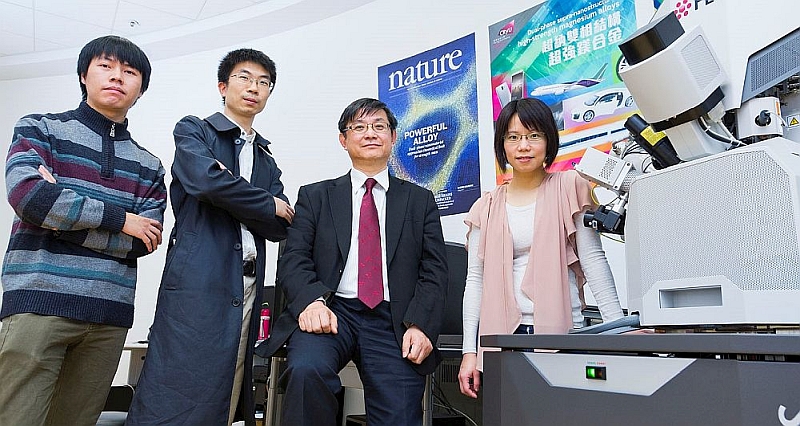World’s strongest magnesium alloy developed Potential application as biodegradable medical implants

The new advanced material is 10 times stronger than conventional crystalline magnesium alloy and has super-deformation capacity two times higher than that of magnesium-based metallic glass. The magnesium-alloy system consists of nanocrystalline cores embeddedin amorphous glassy shells. The strength of the resulting dual-phase material is a near-ideal 3.3 gigapascals (Gpa) – making this the strongest magnesium – alloy thin film yet developed.
Led by Professor Lu Jian, CityU Vice-President (Research and Technology) and Chair Professor of Mechanical Engineering, the team has been working hard on developing structural and functional materials with high strength and high ductility to overcome the limitations of existing materials. In the past five years, the team has successfully developed a dual phase alloy film structure smaller than 10nm, and named it as supra-nano-dual-phase glass-crystal (SNDP-GC). This is a new family of alloy structures – a world first.Ka-cheung).

Professor Lu said that this new alloy has plenty of potential applications, including biodegradable implants. “The magnesium (Mg) alloys are newly developed biodegradable materials. The Mg-based SNDP-GC deposited Mg alloy could be used as a new prototype for biodegradable implants with excellent wear resistance. Patients would not have to undergo further surgery to remove the parts.”
Furthermore, it could be used as a coating material for artificial joints for knees and hips, which can improve wear and corrosion resistance and reduce the risk of allergic reactions to metallic joints.
The low-density property of magnesium alloy has also made it a desirable lightweight material for consumer electronics, such as smart phones and laptops, as well as aerospace and automotive products. However, scientists have been working hard over the years to improve its strength and wear resistance. CityU’s newly invented alloy can be a good substitute, as it can sustain pressure of more than 300 kilogrammes force per square millimetre and has super-high wear-resistance.
The innovation has been published in top academic journal Nature.